WIBTA for hiding a family heirloom, so my dad can’t give it to his fiance?
Family heirlooms are not just objects—they carry history, sentimental value, and deep emotional connections. They represent the stories of those who came before us, often passing through generations as symbols of love and legacy. But what happens when an heirloom is threatened to be given away to someone outside the family? Suddenly, it becomes a battle of sentiment versus ownership.
For OP, their great-grandmother’s embroidery isn’t just another decoration. It’s a treasured piece of family history, something that connects them to a loved one they admired but never had the chance to learn from. But now, OP’s father—who has distanced himself from his children—wants to give it to his new girlfriend, not because of its sentimental value, but because it “matches the decor” in her cabin.
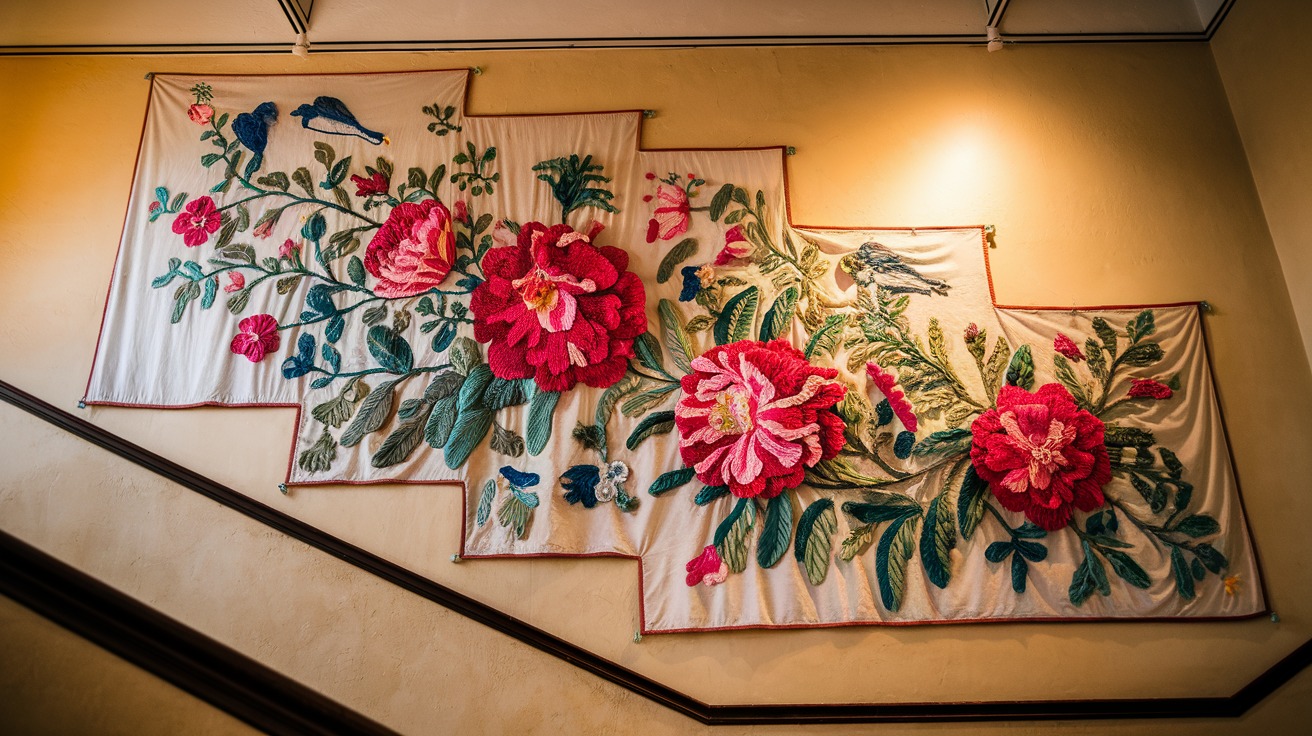
‘WIBTA for hiding a family heirloom, so my dad can’t give it to his fiance?’
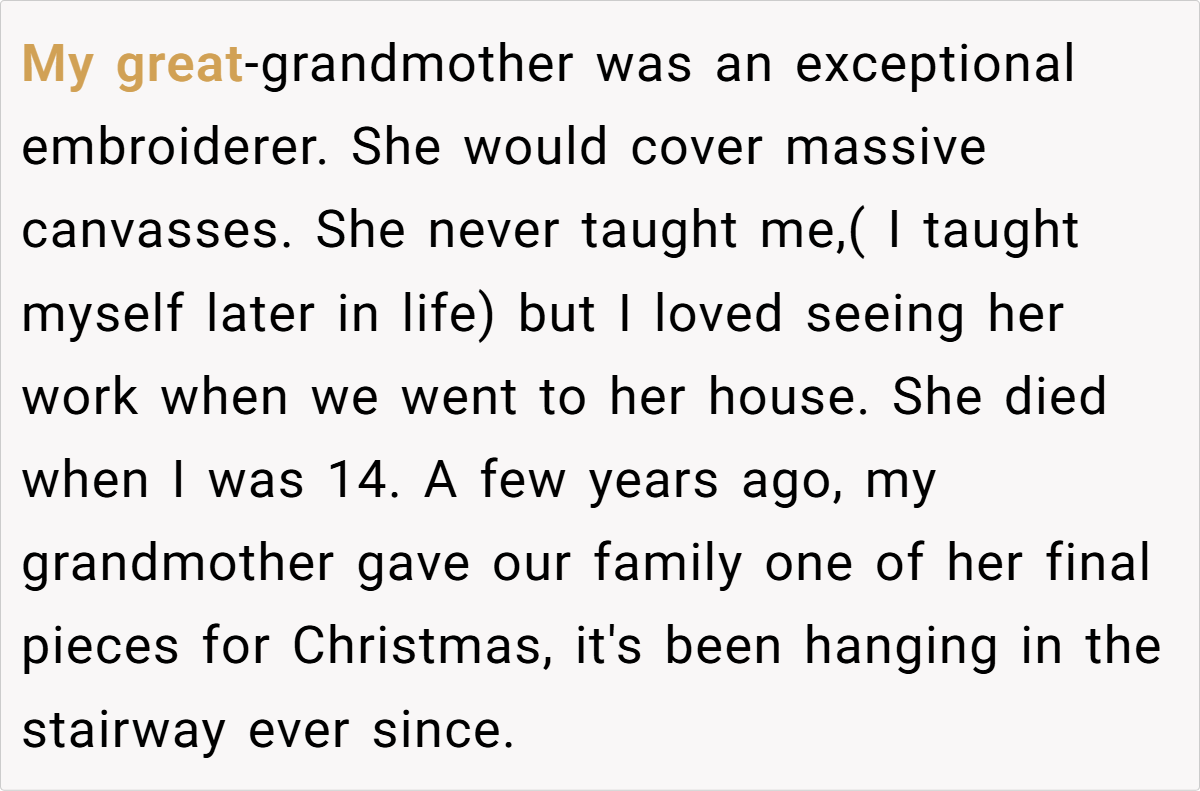


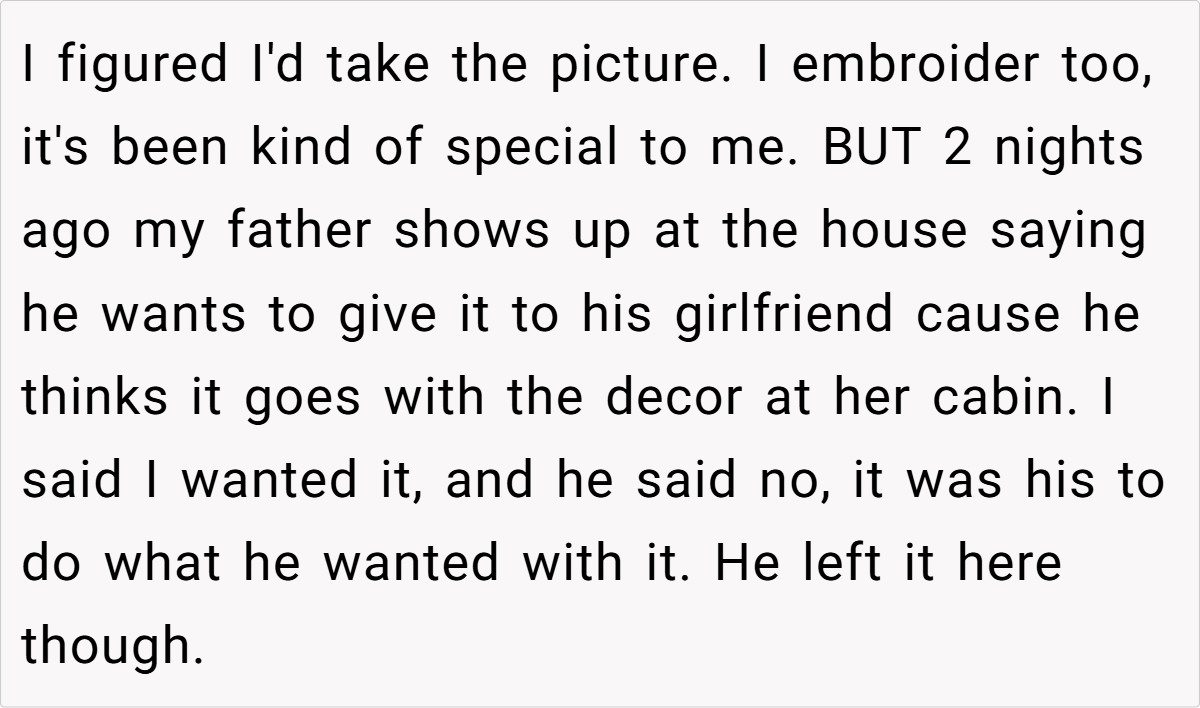

Expert Opinions:
Understanding the Core Conflict
The great-grandmother’s embroidery was gifted to the family as a whole, not solely to OP’s father. This means that multiple family members have emotional stakes in its fate.
While OP sees it as a cherished link to their great-grandmother and their own passion for embroidery, the father sees it as an aesthetic decoration that can be rehomed. This fundamental difference in perception is what drives the emotional tension.
Legally speaking, unregistered heirlooms can create ownership ambiguities
According to Professor Carla Spivack, an expert in inheritance law, many inheritance disputes arise because heirlooms are often passed down without formal documentation, leading to disagreements over intent. She explains:
“The key to resolving heirloom disputes is understanding the original intent—did the giver mean for it to remain within the family or to be freely distributed?”
Applying this to OP’s case, the embroidery was gifted to the family, not solely to the father. Since he abandoned the home and left it behind, one could argue he forfeited his right to it.
Beyond legal concerns, heirlooms play a critical role in grief and memory
Dr. Alan Wolfelt, a grief expert, states: “Objects tied to our deceased loved ones help us maintain a connection with them. How we handle these items reflects our personal grief process.”
This explains why OP feels so strongly—the embroidery isn’t just fabric; it’s a living memory. Their father may not attach the same depth of emotion to it, making him more willing to part with it.
To prevent a lasting family rift, OP could:
- Communicate with Family Members: If OP’s brother is also attached to the embroidery, they should formally agree to keep it within the family. This way, it remains a shared legacy rather than a source of future disputes.
- Secure the Heirloom Before Moving Out: Given the emotional significance, OP should store the embroidery safely before their father can reclaim it. This ensures that it won’t be given away impulsively.
- Consider Mediation: If OP’s father is willing to have a calm conversation, they could discuss why keeping the heirloom matters to them, emphasizing that it is about family history, not personal conflict.
- Offer a Compromise: Suggest giving the girlfriend an alternative decoration while keeping the embroidery within the family.
Here’s the comments of Reddit Users:
The majority of Reddit users sided with OP, believing that family heirlooms should stay in the family. Many pointed out that the embroidery was a gift to the entire family, not just OP’s father, meaning he doesn’t have sole ownership. Others argued that once he abandoned the home and left the heirloom behind, he essentially gave up any claim to it.



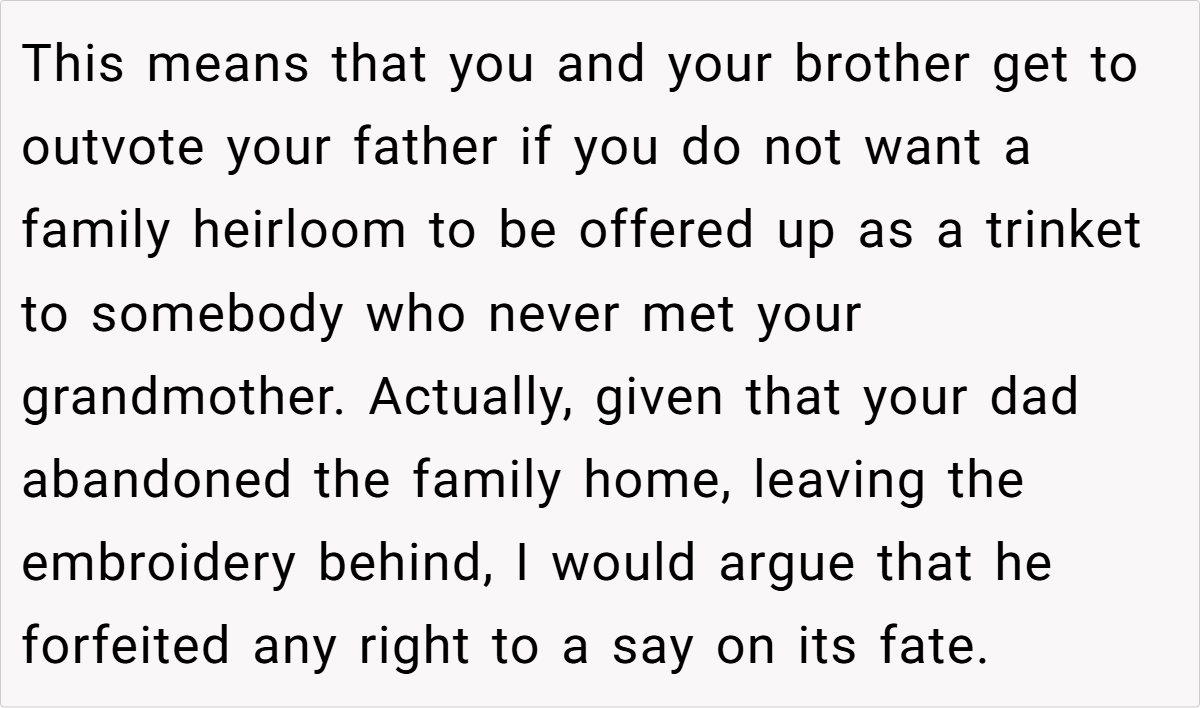

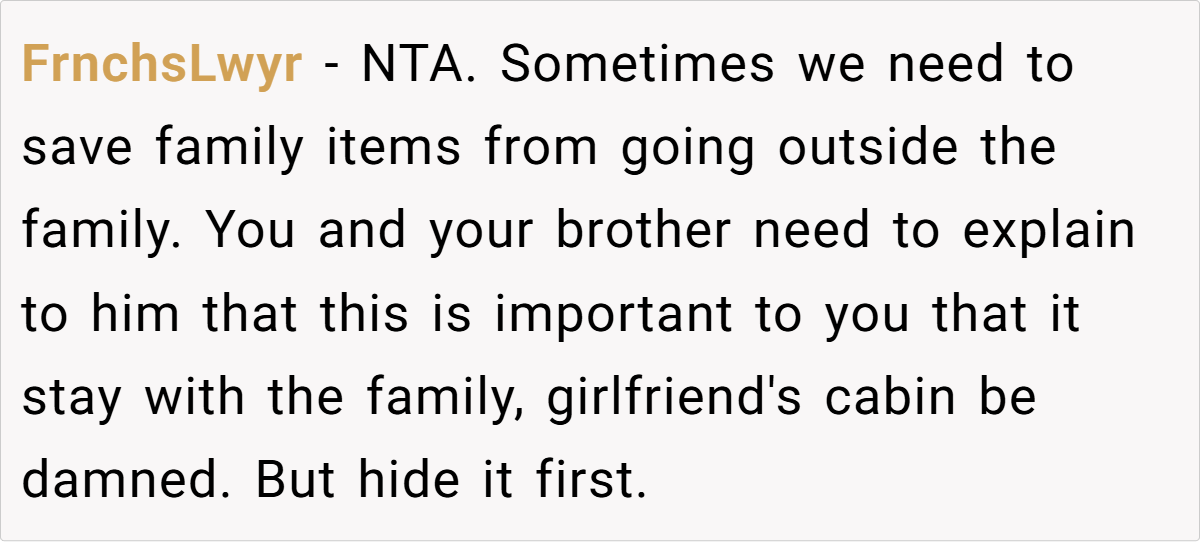

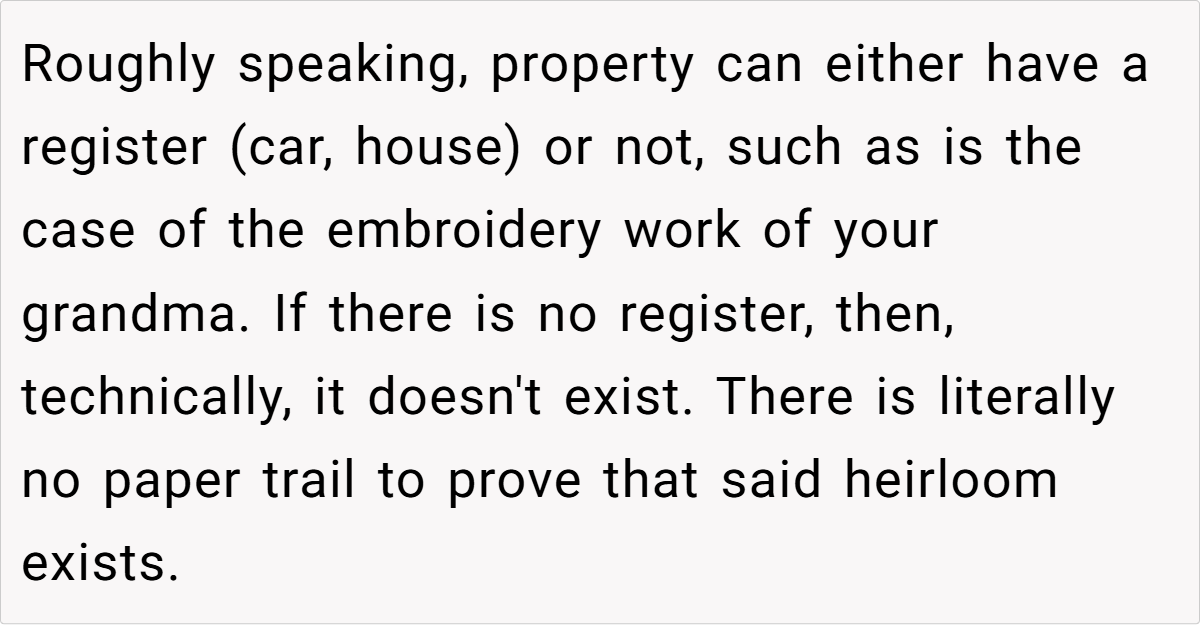

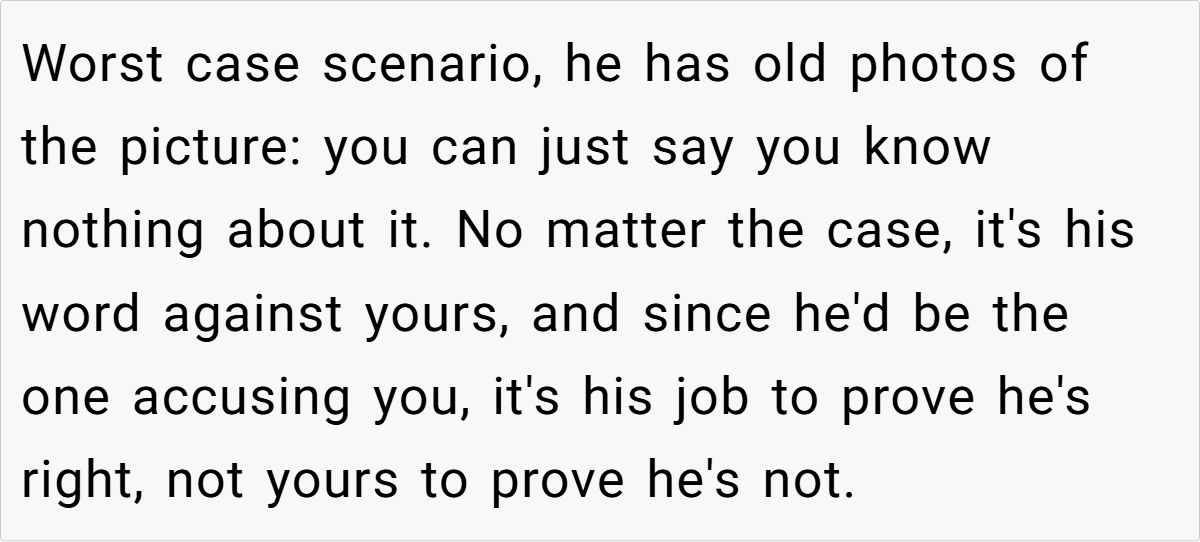






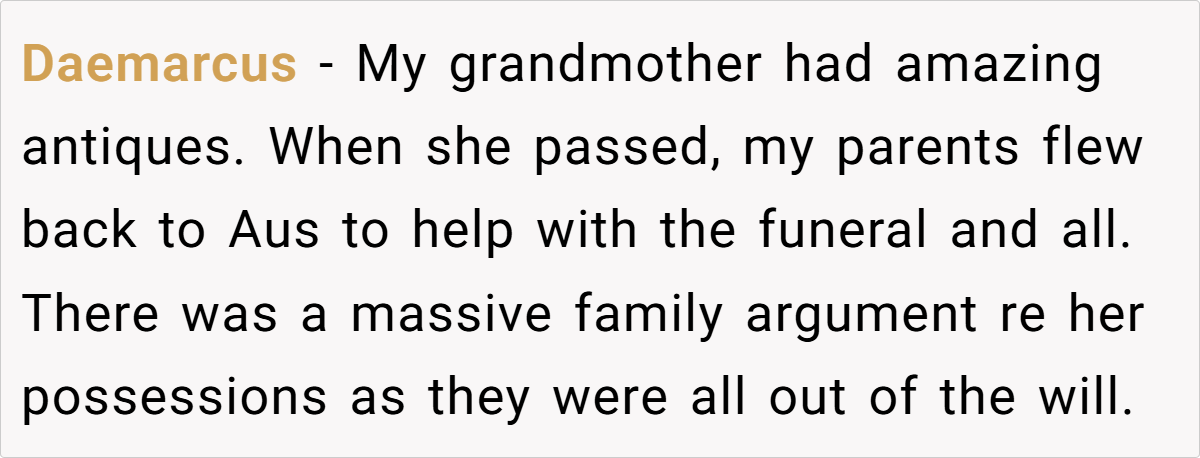





What would you do in this situation? Would you take the embroidery to protect family history, or respect your father’s wishes? Share your thoughts in the comments!

